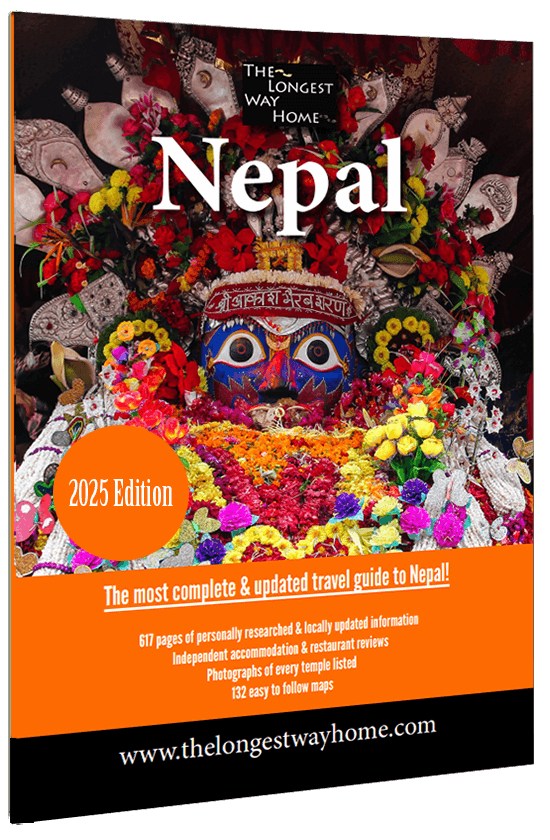About the Tibetan refugee settlements
Following the Chinese takeover of Tibet, there was an influx of over 300,000 exiles/refugees into Nepal on the way to Dharamsala in India. It's estimated that 60,000 settled in Nepal. 2,500 refugees cross the border every year either to make their way to India or settle in Nepal.

There are 12 official Tibetan settlement camps in Nepal.. 8 in Kathmandu, and 4 in Pokhara (Tashi Ling, Tashi Palkhel, Jampaling, and Paljorling). There are several more smaller settlements in the surrounding hillsides around Pokhara.
Did you know?
While the Tibetan Refugee Settlements were set up under the immediate need for assistance to the Tibetan people today, many Tibetans earn a living from tourism.
History of the Tibetan settlement camps in Nepal
Up until 1989, Tibetan exiles were allowed ID cards and economic assistance in Nepal. However, due to a recent Chinese/Nepali trade agreement, Nepal has agreed not to recognize Tibetan Refugees. They are now not allowed the right to own land, drive a car, work, or claim any state benefit.
Today, by way of a "gentleman's agreement," any refugee detained by the Nepali authorities will contact the UNHCR who will oversee their placement in a refugee settlement prior to being sent to India.
Today, there are huge trade agreements between Nepal and China, which has human rights organizations calling for concern going largely unnoticed.
Things to do around the settlement camps
If you've spent any time in Pokhara, then at some stage while walking along Lakeside, you're sure to have been approached by someone from Tibet selling bracelets or beads.

Many Tibetan refugees are not allowed to legally work. Due to this, many sell handmade jewelry, trinkets, carvings, and carpets as a form of income they can walk around with. Within the settlement camps, you will often find much of the same. While during the day, people are out tending to crops, there will be a few working and selling there. Shops such as these are either technically owned by Nepali or the authorities simply don't act.
The large carpet shop is allegedly owned by a Nepali company who has an agreement with the Tibetan carpet makers and tour companies.
In Pokhara, the most frequently visited Tibetan camps are Tashi Palkhie & Jampaling due to their close proximity to the city. All the camps have a small Buddhist Monastery. If you are there for Tibetan New Year (Feb-March), there can often be colorful celebrations held at the monastery.
Things to buy at the Tibetan settlements
Most of the items for sale are genuine in terms of being handmade. Items can and should be bartered for. Even if there is a price on them.
- Bracelets and Necklaces
- Rings
- Woodcarvings
- Carpets & rugs
- Clothing
Volunteering & Donating
The Tibetan situation often creates an outpouring of emotion from all sides. Many tourists to Nepal see the abject poverty and situation people are in. However, as the Chinese business population increases in Nepal, there are now those who wish the Tibetan refugees to be sent back to China - this includes second and third generations who've been born and raised in Nepal.
In 2021, refugee status was given to many seeking help in Nepal, but Tibetan refugees were not included.

It's important to remember that short-term donations and inexperienced volunteering can create more problems than solutions.
There are a lot of people trying to profit off the Tibetan situation. Similar to Nepali orphanages and schools. Some are genuine, while others are cash-generating businesses using the Tibetan situation to draw people in.
Moreover, in recent years, the Tibetan Refugee Camps have become "Tourist Attractions" more than resettlement camps. Paid for tours appear, are shown around a courtyard with a few old carpet makers, brought inside to buy one, and then taken to the next destination.
Between 2022-2024, China has put pressure on Nepal to no longer recognize the Tibetan refugees. Many are being asked to return and settle in China. So far, none of them have taken up the offer. Unfortunately, Nepal also seems to have stalled the citizenship process of many refugees.
Simply showing up with a camera, clothing, food, money, and a good heart will probably do you more good than the people there. If you do wish to support a settlement, the best place to ask is the UNHCR in Kathmandu. They will steer you in the right direction. UNHCR in Nepal Address: Dhara Marga-1, Anil Kuti, Maharajgunj, Kathmandu. Telephone +977 1 441 2521
Alternatively, before going, do read this article about volunteering in Nepal.
Get my Guidebooks!
Liked this page? You'll love my books!
100% independent guidebooks, with no sponsored trips or ads. Designed to help travelers get the most out their trip to Nepal with premium detailed guides, insider information, impartial hotel and restaurant reviews, complete trekking routes, dedicated heritage walks & much more ...
Available in print or digital editions - the best guidebooks for visiting Nepal.
 |
 |
Full Nepal Guidebook
|
Pokhara
Guidebook
|
Was this page helpful to you? If so please tell others!


